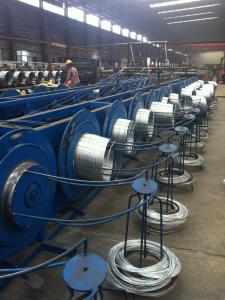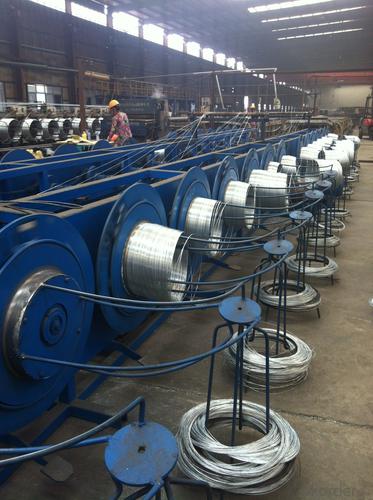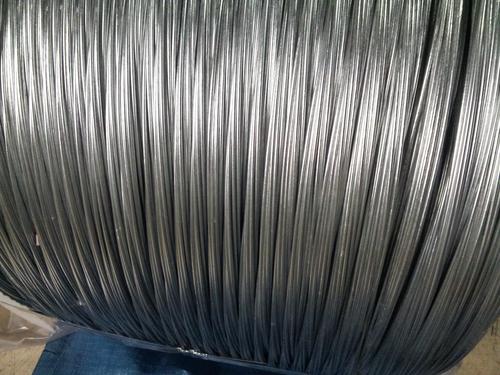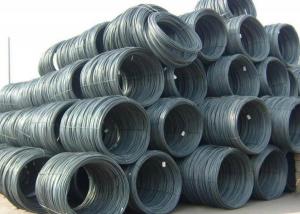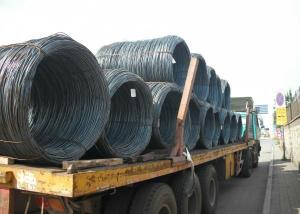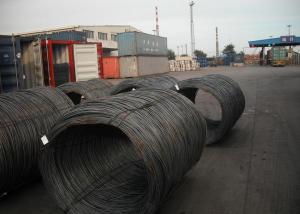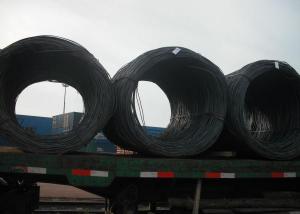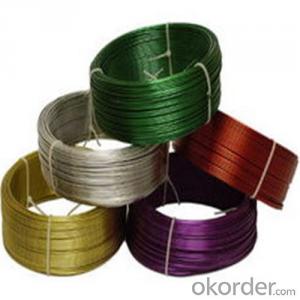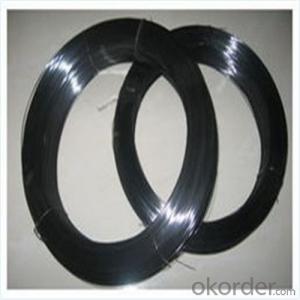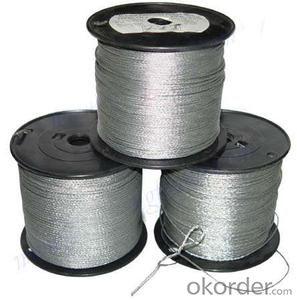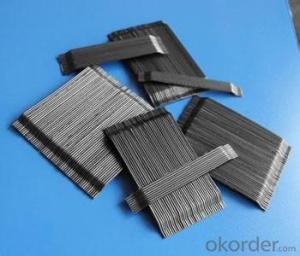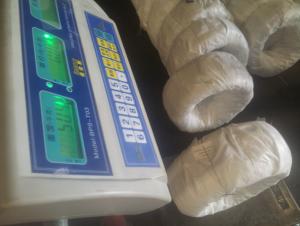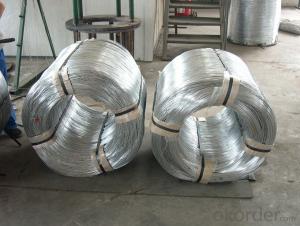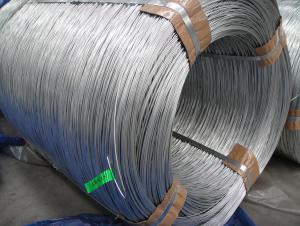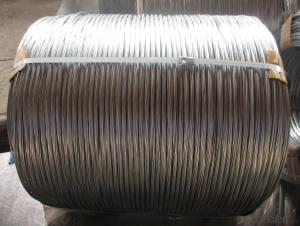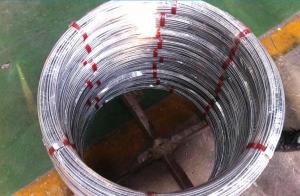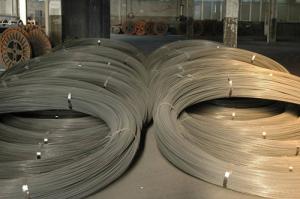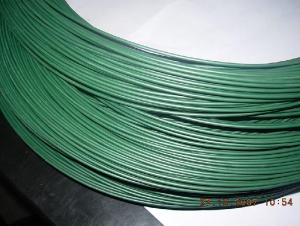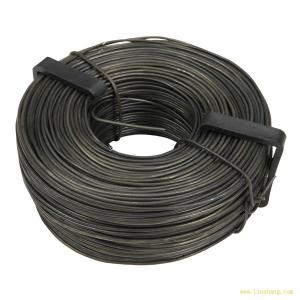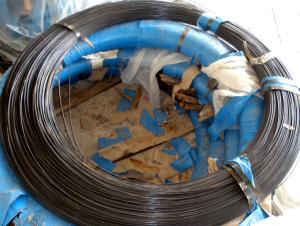Hot Dipped Galvanized Wire For Chainlink Fencing
- Loading Port:
- China Main Port
- Payment Terms:
- TT OR LC
- Min Order Qty:
- -
- Supply Capability:
- -
OKorder Service Pledge
OKorder Financial Service
You Might Also Like
Hot Dip Galvanized Steel Wire
(1) Quality : Meet GB/T 343 standard and other requirements of relevant standards .
(2) Zinc Coating: Meet GB/T 15393 standard and other requirements of relevant standards .
(3) Raw Material : Wire rod ——1006 , 1008 , 1018 , Q195 , etc, and zinc with 99.995% purity.
(4) Tensile Strength Range
Size (mm) | Tensile Strength (mpa) |
0.15-1.60 | 290-550 |
0.65-1.60 | 400-550 |
1.61-6.00 | 400-1200 |
(5) Application : Used in wire mesh , artware , metal hose , binding for agriculture and construction , etc.
(6) Packing
Size (mm) | Coil Size | Spool Packing | Big Coil Packing | |
ID (mm) | OD (mm) | |||
0.15-0.26 | 6 inch | 1-14kg/spool |
|
|
0.27-0.60 | 8 inch | 1-100kg/spool |
|
|
0.61-1.60 | 12/14/16 inch | 1-100kg/spool | 250-400 | 400-770 |
1.61-6.00 |
| 14-500kg/spool | 450 | 800 |
508 | 840 | |||
(7) Zinc Coating
Meet GB/T 15393 standard.
Size (mm) | Weight of Zinc-Coating ( g/m2 ) | |||||||
A | AB | B | C | D | E | F | ||
A1 | B2 |
|
|
|
|
|
| |
≤0.25 |
|
| 30 | 20 | 18 |
|
|
|
>0.25-0.40 |
|
|
| 30 | 25 | 20 |
|
|
>0.40-0.50 |
|
|
|
| 30 | 20 |
|
|
>0.50-0.60 |
|
|
|
| 35 | 20 |
|
|
>0.60-0.80 | 120 | 110 |
|
| 40 | 20 |
|
|
>0.80-1.00 | 150 | 130 |
|
| 45 | 25 |
|
|
>1.00-1.20 | 180 | 150 |
|
| 50 | 25 |
|
|
>1.20-1.40 | 200 | 160 |
|
| 50 | 25 |
|
|
>1.40-1.60 | 220 | 180 |
|
| 50 | 35 | 30 |
|
>1.60-1.80 | 220 | 180 |
|
| 70 | 40 | 30 |
|
>1.80-2.20 | 230 | 200 |
|
| 80 | 50 | 40 |
|
>2.20-2.50 | 240 | 210 |
|
| 80 | 55 | 40 |
|
>2.50-3.00 | 250 | 230 |
|
| 90 | 70 | 45 |
|
>3.00-4.00 | 270 | 250 |
|
| 100 | 85 | 60 | 30 |
>4.00-5.20 | 290 | 270 |
|
| 110 | 95 | 70 | 40 |
>5.20-6.00 | 290 | 270 | 245 |
| 110 | 100 | 80 | 50 |
- Q: i have 2 audiobahn 12s and an adiobahn amp in my 2000 malibu...1. the thin blue wire that comes from the amp to the stereo is connected to an orange wire behing the (stock) stero, and when i turn off the car the amp stays on. does anyone know which wire to connect the blue wire to, so the amp turns off with my radio or when i turn off the key.2. only one of my 12s is hitting, i think ther might be a wire connected wrong behind the stero. since i have a stock stereo and i have a converter hooked up, because it had no rca inputs on it. its not the speaker or the rca wire itself, because when i connect it with a y cable to the amp one or the other will work...i would appreciate it if someone could help.
- I dont specifically know what the wiring diagram for a malibu is, (you should look this up if you dont already know, so that you can properly wire your amp), but this is how it should be connected: 1. the blue wire should be hooked to the remote turn on wire or power ant wire from your car 2. the power wire should be wired directly to your battery, with an inline fuse. The power wire should NOT be connected to any of the wires already existing in your car. 3. the ground wire should be connected directly to a ground point in your car The reason that your amp is not shutting off when the car turns off is because you more than likely did not properly connect the remote turn on/power antenna lead. If your car doesn't have one, you can connect it to the ignition (be careful when doing this). As for the subs, check the wires that you spliced into to your line-out converter. It sounds like you may not have properly connceted the left wire, and only the right is getting a signal. If it's not that, then maybe you bought a crappy line-out converter and it's broken.
- Q: What is the best brand of wire to use for getting power to my amp?
- Monster cable 10 awg
- Q: Friend’s dog chewed my fuel pump wires on my 90 Chevy caprice classic I need to know what colors match up correctly. I have coming from the pump: Purple, Gray or (Tan color) black, only other wires in site coming from tail light harness are Pink, Gray, black/ white stripe. I have tested these wires and found out that the (black/white wire was ground, Pink was hot, Orange was hot not didn't light up as bright as the pink with the test light) Found nothing in Mitchell’s book to help also called dealers I printed out a wiring diagram but not much help..
- the gray wire, may also be tan, is the B+ wire coming from term E of the fuel pump relay. The purple or pink wire should go to the cluster terminal X if you have gauges or terminal I, as in eye, if you have idiot lights(indicators). The black wire is ground. Connect this to anywhere that is not rusty or painted.
- Q: How do I tell which wire is positive and which wire is negative on the door speakers and the rear speakers?
- The one with stripe is negative.
- Q: How do I wire MULTIPLE ones? I checked many sites and yes, I do get schematics, I've seen a billion schematics, but now I don't know how to actually put it together.My big question is, can I just solder two wires running from my 5V + terminal like that? Would there be problems?So if I have a 5V battery.
- You can do this a number of ways. All of the postive terminals must be connected in some way and all of the commons must be connected in some way. This doesn't mean you have to connect each positive to every other postive, and likewise for the common. You have a few options: You can solder two wires to the positive terminal of the battery and run one wire to each load (device). You can solder one wire to the positive terminal of the battery, run this wire to the first load (device), solder another wire to the first load (device), connect this wire to the second load(device). You can solder one wire to the positive terminal to the battery, run this wire to the second load, solder an additional wire to the second load, and run the second wire to the first load. In industry, power wires are typically jumped from one device to the next to delivery power to each device that needs it. Basically, your power needs to go to each one. How you connect them is up to you.
- Q: Ok, I am having trouble installing a new car radio in my 97' Honda Civic Lx. It's just a basic pioneer cd player.. I matched all the colored wires up and still nothing. My brother had told me something about + - for example do i hook the green stripped wire with a flat green wire? Vice versa.. Help please.. Also If you know of a web site with diagrams?
- Honda Civic Wiring Diagram
- Q: I recently purchased a 1-wire alternator and I'm not sure what to do with the wire harness that was on my stock alternator. Also not sure what the three wires on it go to. Can anyone experienced in alternator wiring tell me what these wires do and if it is ok to leave them unhooked?
- Can't tell you for sure what it is unless I looked but most alternators generate 3 phase power so maybe it's a wire for each phase of your power. The new alternator is putting all 3 phases into one wire internally to feed out. I would check with the manufacturer if the new alternator is compatible.
- Q: What are those strange ball-like things that are on some electric/telephone wires? I think they're on electric wires. I've always wondered.
- I believe they are usually on the top most wire and are designed to alert aircraft of danger. That's my story and I'm sticking to it.
- Q: I am re wiring a hanging lamp. I know the black wire is the hot. My problem is this, the replacement wire is gold. There is no apparent groove in the wire, but one side does have writing on it. If I remember correctly the side with the writing is the hot?
- Should not be major problem as long as it is just the lamp itself you are wiring as all grounds should be separate of the device itself ac current should in general for safety sake be regarded as hot on both sides. To many times i have seen white used as a hot leg in wiring three way switches
- Q: Okay so bought 2 Kicker Comp C12-8 subs they are single voice coil, and I bought the Kicker DX300.2 amp. I would like to parallel wire thes subs to have a 4 ohm load, But I don't totally get the concept of it. Could somebody explain it, or show me a diagram, or video, or something?
- Parallel is simple. Connect positives to positives and negatives to negatives. Series wiring is the opposite.
Send your message to us
Hot Dipped Galvanized Wire For Chainlink Fencing
- Loading Port:
- China Main Port
- Payment Terms:
- TT OR LC
- Min Order Qty:
- -
- Supply Capability:
- -
OKorder Service Pledge
OKorder Financial Service
Similar products
Hot products
Hot Searches
Related keywords
